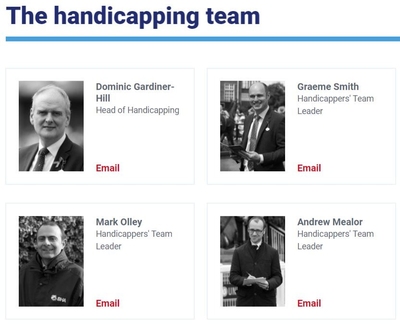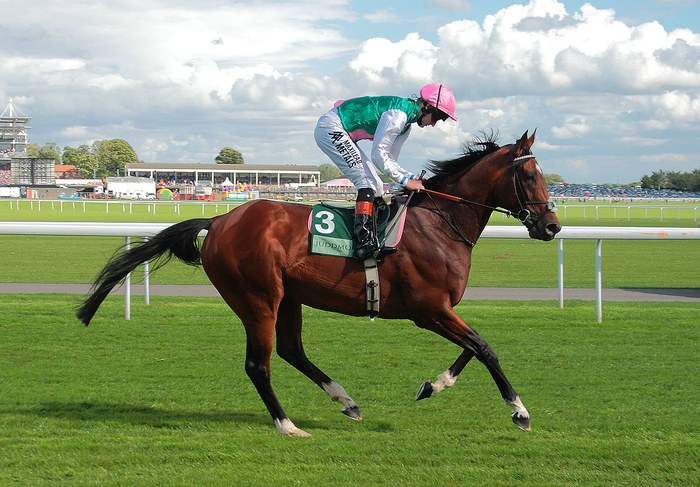 Handicapping is important in horse racing to ensure races stay as competitive as possible. This is done by allocating all horses different weights. Around 60% of all races in Britain are handicap races.
Handicapping is important in horse racing to ensure races stay as competitive as possible. This is done by allocating all horses different weights. Around 60% of all races in Britain are handicap races.
Ratings are determined by the ‘handicapper’, so in a handicap race the highest rated horse will carry the most weight with those rated lower carrying less weight according to their ratings. So, if a horse is rated 80 and carries 8st 12lbs, then a horse rated 77 would carry 8st 9lbs. A horse qualifies for a handicap rating either after three runs, or when they have won a race.
Anomalies come when there is weight-for-age included in a handicap race. For example, two horses both rated 95 but one being a five-year-old and one being a three-year-old. Usually in their three-year-old season, a horse will be considered weaker and will be entitled to a weight allowance. So, the younger horse may carry a few pounds less than the older one despite being rated the same.
Who Decides a Horse’s Handicap?
 The British Horse Racing Authority actually has a team of handicappers whose role it is to study form and ability and determine the ratings for each animal. If horses run what is determined to be above their rating, they may be raised in the handicap and likewise if they run poorly, they can be lowered. The BHA publishes new handicap ratings every week.
The British Horse Racing Authority actually has a team of handicappers whose role it is to study form and ability and determine the ratings for each animal. If horses run what is determined to be above their rating, they may be raised in the handicap and likewise if they run poorly, they can be lowered. The BHA publishes new handicap ratings every week.
With this in mind, when a horse wins very easily and it’s trainer believes the handicapper will raise it many pounds in the ratings, very often they will turn the horse out again quickly under a standard six or seven pound penalty so that it may gain some sort of racing advantage.
Handicap races are usually restricted to horses within a certain range of ability, for example 0-70 means only horses rated 70 or under may take part. On the flat in particular, the very best horses around do not run in handicaps. Apart from the occasional Listed race anything in ‘pattern’ grade, so Listed, Group 3, Group 2 and Group 1 races are called conditions races. The weights the horses carry are broadly similar in these races, although males will give weight to females and three-year-olds will receive weight from older horses etc.
From time to time, runners from overseas will take part in British handicap races. As such, BHA handicappers confer with their international colleagues over ratings for handicap races. Their ratings though do not only concern handicap races; even the best horses have a handicap rating and this helps determine which the very best horses on the planet are. Since ratings were introduced, Frankel is the highest rated race horse ever on the flat at 140.

Despite not actually featuring the very best horses, Britain’s biggest betting races are handicaps. Tens of millions of pounds are exchanged on races such as the Lincoln, the Grand National, the Ebor and the Northumberland plate. These tend to be races featuring 20-30 runners and are difficult for the public to solve, which is part of the attraction. Massive pride, as well as bigger profits, is on offer for those finding the winners of these races and it’s this level of competition created by handicaps which keep the sport interesting and competitive.
If the huge prize money on offer was taken away from these handicaps and used only for Group races, then the sport would cease to be competitive and interesting to the public. Aside from the Classics, the huge TV audience British racing still attracts tune in to watch the huge handicaps. Think of the office sweepstakes on the Grand National and just how hard it is to find the winner of that race, with 40 runners jumping 30 fences and all in theory handicapped to have the same chance. Without handicapping, that sort of extravaganza would not exist.